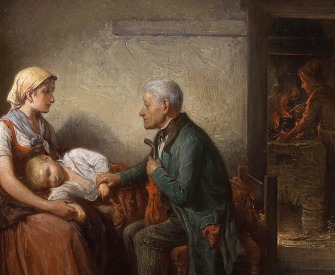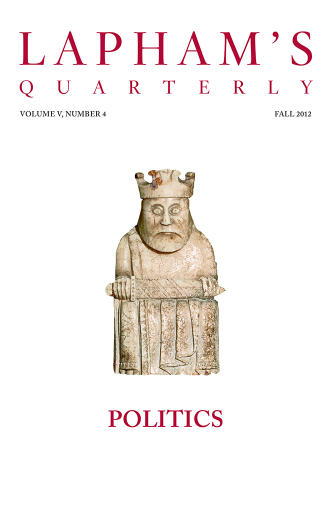Fire destroys that which feeds it.
—Simone Weil, 1940The Best Charcoal
Theophrastus’ advice for building a fire.
We must endeavor to determine the properties of each kind of timber in relation to making fire. The best charcoal is made from close-grained wood such as holm oak and arbutus. These are the most solid; they last the longest and are the strongest and so are used in silver mines for the first smelting of the ore. The worst wood is oak, since it contains the most mineral matter. The wood of older trees is inferior to that of younger ones, and for the same reason that of really old trees is especially bad; it is very dry and sputters as it burns. Wood for charcoal should contain sap.
The best charcoal comes from trees in their prime and especially from trees that have been topped. These contain in the right proportion the qualities of a close grain, admixture of mineral matter, and moisture. Better charcoal comes from trees in a sunny, dry position facing north than from those grown in a shady, damp position facing south. But if the wood used contains a good deal of moisture, it should have a close grain; such wood contains more sap. For the same reason, wood with a closer grain—either from its own natural character or because it was grown in a drier spot—is better, regardless of kind. Different kinds of charcoal are used for different purposes. For some purposes, it must be soft: In iron mines, men use charcoal made of sweet chestnut when the iron has already been smelted. In silver mines, they use charcoal of pinewood. These kinds of charcoal are also used by the crafts. Smiths require charcoal of fir rather than of oak; though it is not as strong, it blows up better into a flame, as it is less apt to smolder. The flame from these woods is also fiercer. In general, the flame is fiercer not only from these but from any wood that is of open texture and light, or that is dry. Flames from close-grained or green wood are more sluggish and dull. The fiercest flame of all is given by brushwood, but charcoal cannot be made from it at all, since it lacks the necessary substance.
In general, damp wood makes an awful smoke, and for this reason green wood also does—I mean the damp woods that grow in marshy ground, such as plane, willow, abele, and black poplar. Even vine wood, when it is damp, gives an awful smoke. So does palm wood, and some have said that it gives the most awful smoke of all. Chaeremon speaks of “veins issuing underground from roots of palm, with its malodorous smoke.” Most pungent is the smoke of fig wood, whether wild or cultivated, and of any tree that has a curdling juice. The reason lies in the sap. When such wood has been barked, soaked in running water, and then dried, it gives as little smoke as any other and sends up a very soft flame, since its natural moisture has been removed. The cinders and ashes of such wood are also pungent—especially, they say, those of almond wood.
For crafts requiring a furnace, as well as those that do not, various woods are serviceable according to circumstances. For kindling, fig and olive are best: fig because it is tough and has an open texture, so that it easily catches fire and does not let it go; olive because it is close-grained and oily.
Fire sticks are made from many kinds of wood, but the best, according to Menestor, are made from ivy, which flares up most quickly and freely. They also say that a very good fire stick is made of the wood that some call “traveler’s joy”; this is a tree like the vine or the wild vine that, like these, climbs up trees. The stationary piece should be made of one of these, the drill of bay. The active and passive parts of the apparatus should not be of the same wood but different in their natural properties to start with, one with an active character and the other with a passive one. Nevertheless, they are sometimes made of the same wood, and some suppose that it makes no difference. They are made, in fact, of buckthorn, kermes oak, lime, and almost any wood except olive. This seems surprising, as olive wood is rather hard and oily, but it is plainly its moisture that makes it less suitable for kindling. The wood of the buckthorn is also good, and it makes a satisfactory stationary piece; besides being dry and free from sap, it should be of a rather open texture, so that the friction may be effectual, while the drill should be one that gets little worn by use. And that is why one made of bay is best; because it is not worn by use, it is effective through its biting quality. All fire sticks take fire quicker and better in a north than in a south wind and better in an exposed spot than in one that is shut in.

Theophrastus
From Enquiry into Plants. Theophrastus met Aristotle at Plato’s Academy, and after Plato’s death the two traveled through Asia Minor, eventually arriving in Lesbos, where they studied the region’s thousands of species of flora and fauna. They returned to Athens around 335 bc, and Aristotle opened his Lyceum, which included an early botanical garden. When Aristotle was summoned away following the death of Alexander the Great, Theophrastus succeeded him as head of the school. He died around 287 bc, bequeathing his garden to his friends.




